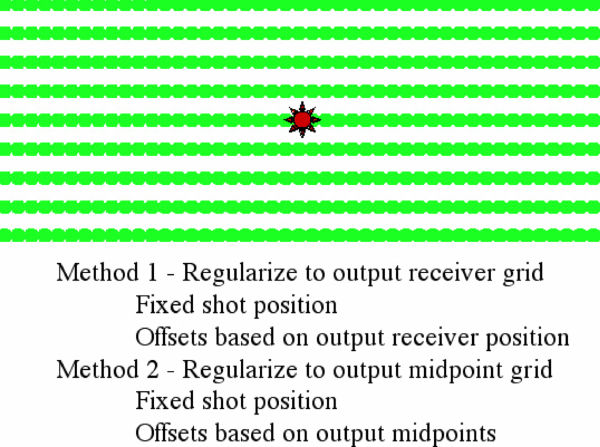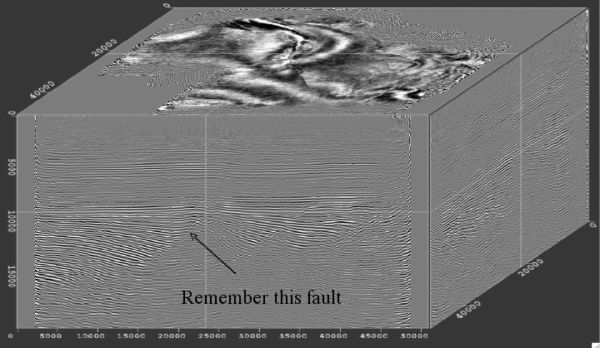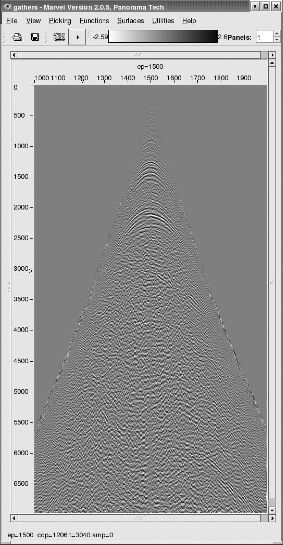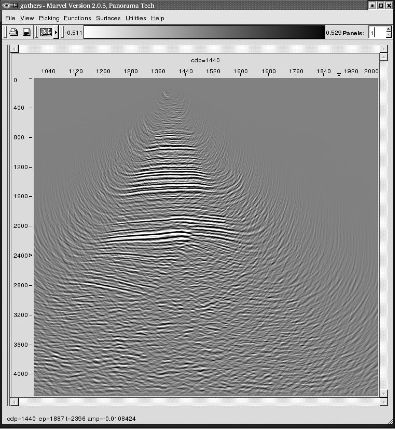Data Mapping through AMO on the Blessing data
In this section, we consider the utilization of AMO as a data mapping technique. The idea is to construct large aperture rectangular densely sampled shots from either narrow azimuth or widely spaced receiver lines. Figure 25(a) shows an AMO based process for construction of large densely sampled areal array shots from otherwise narrow azimuth or widely spaced receiver arrays.
(a)
AMO
as
data
mapping
to
regularize
a
3D
shot
|
AMO in either FK, as described in previous sections, or in integral form as described by Biondi, et al., can be used to directly construct output volumes of any offset and any azimuth. This can be done trace by trace or by computing all volumes at once. In any case, the data is sorted into common shot volumes and migrated shot by shot. Each migrated shot is a full 3D volume and, according to theory, should provide a superior image. Part (b) of this figure is a simple reminder of the fault that we wish to image. Part (c) shows a slice through a 3D rectangular and densely sampled shot generated to provide a reasonable image of the fault in (b). Part (d) shows that this process, at least for this land data set, is quite successful. There is no doubt that the fault is imaged quite well.
- Introduction
- Seismic Modeling
- History
- Zero Offset Migration Algorithms
- Exploding Reflector Examples
- Prestack Migration
- Prestack Migration Examples
- Data Acquisition
- Migration Summary
- Isotropic Velocity Analysis
- Anisotropic Velocity Analysis
- Case Studies
- Salt Flood and Body Insert
- Amplitude Preservation
- Which One Should I Use?
- Land Data PSTM Versus PSDM Comparison
- Autopicking PSTM
- Tomography
- South Texas Fault Shadow
- Blessing Texas Case Study
- Data Mapping through AMO on the Blessing data
- Course Summary




